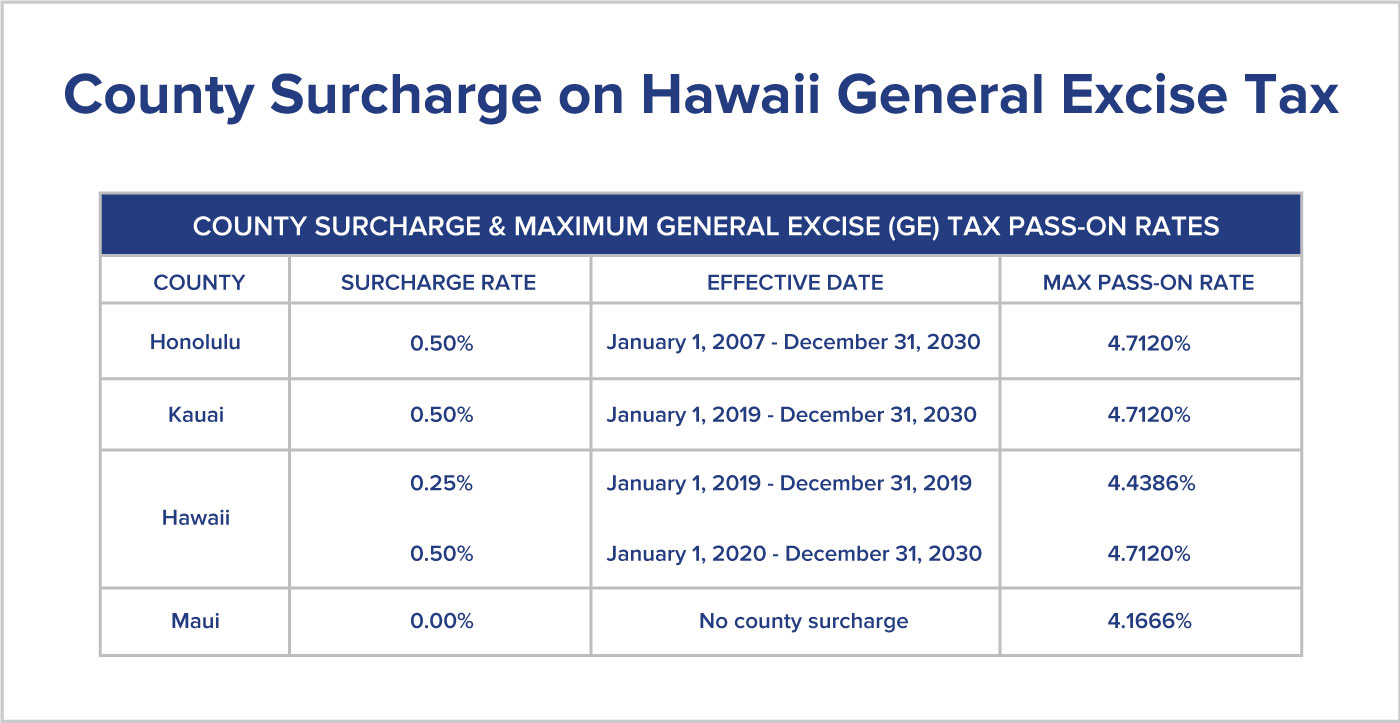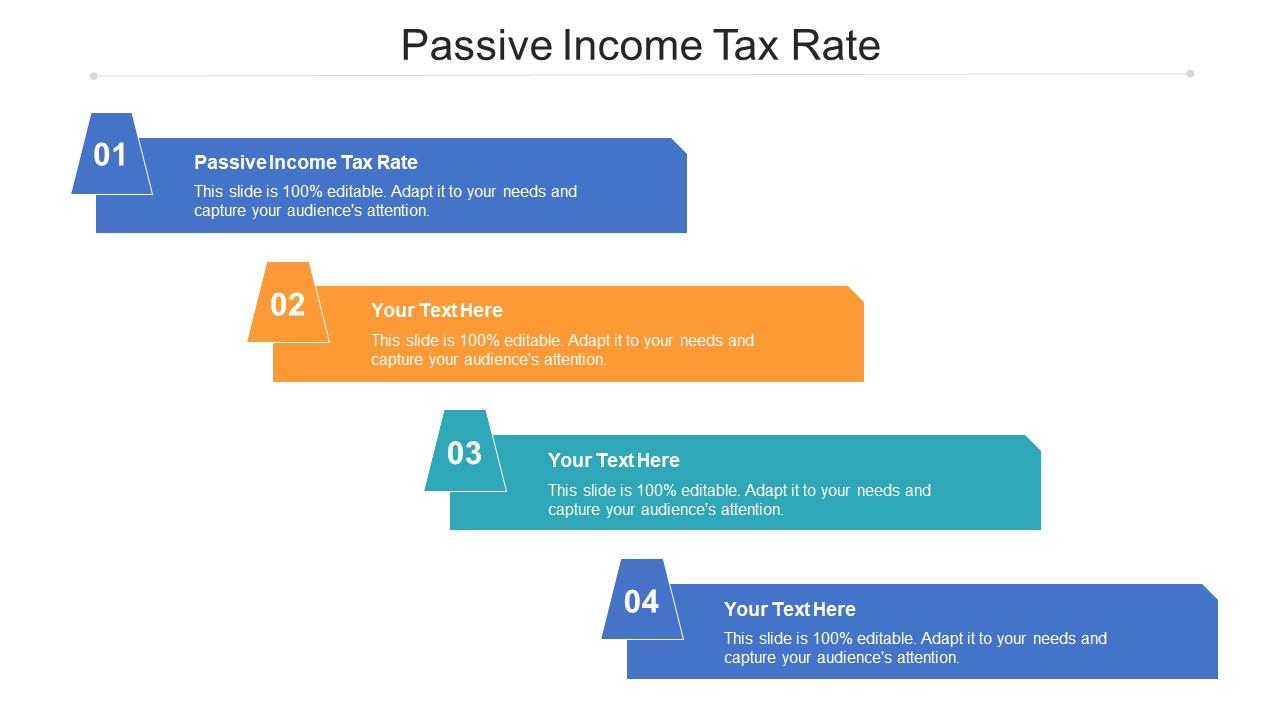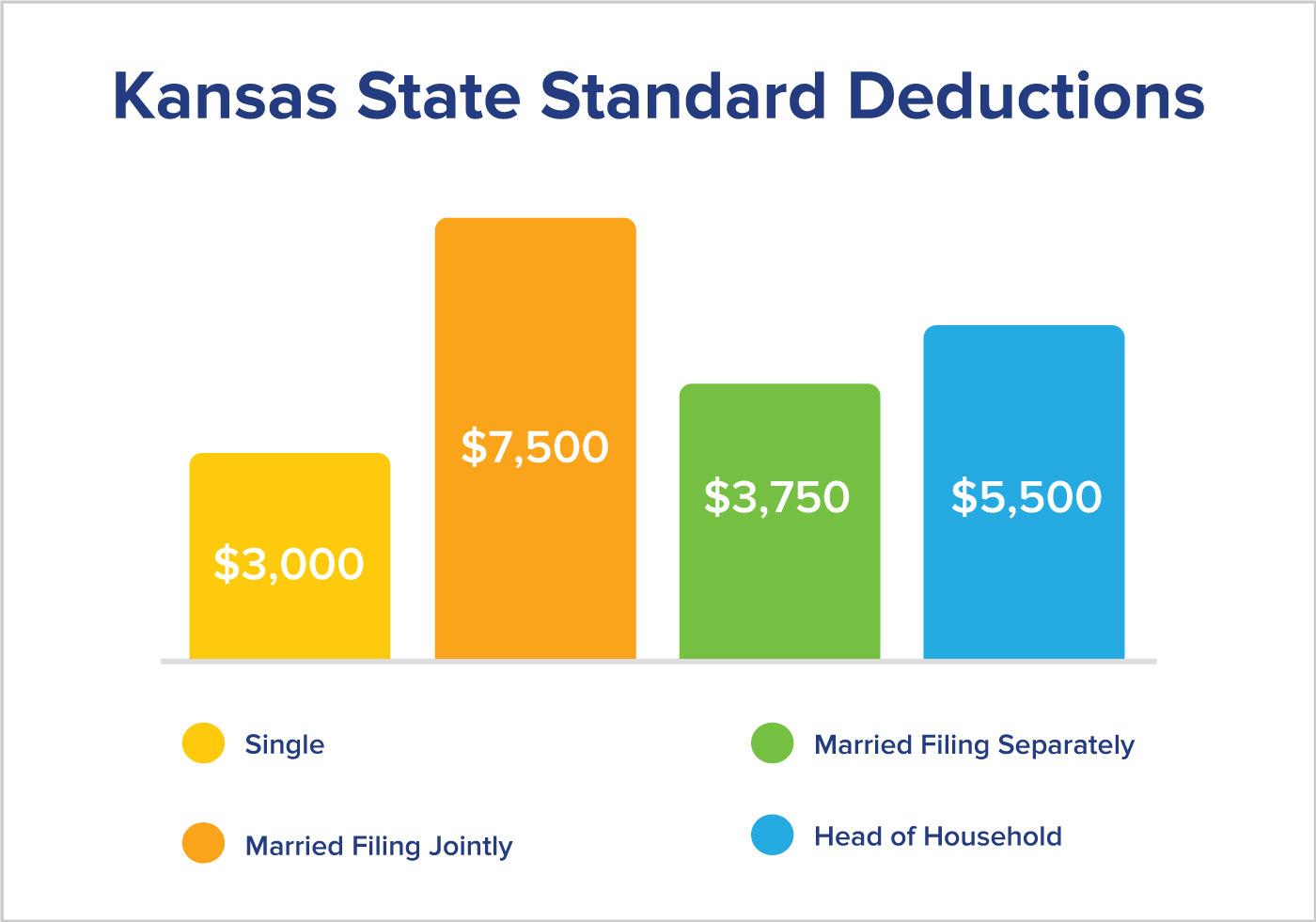

Finance
What Is Indianas Income Tax Rate
Modified: February 21, 2024
Learn about Indiana's income tax rate and how it affects your finances. Find out the latest updates and tips on managing your taxes in Indiana.
(Many of the links in this article redirect to a specific reviewed product. Your purchase of these products through affiliate links helps to generate commission for LiveWell, at no extra cost. Learn more)
Table of Contents
- Overview of Indiana’s Income Tax Rate
- How Income Tax Rates are Determined in Indiana
- Individual Income Tax Rates in Indiana
- Deductions and Credits Available in Indiana’s Income Tax System
- Differences between Indiana’s Income Tax Rate and Federal Income Tax Rate
- Comparisons of Indiana’s Income Tax Rate with Other States
- Recent Changes in Indiana’s Income Tax Rate
- Common Questions and Answers about Indiana’s Income Tax Rate
Overview of Indiana’s Income Tax Rate
Indiana is one of the many states in the United States that imposes an income tax on its residents. Income tax is a tax on an individual’s earned and unearned income, including wages, salaries, dividends, interest, and capital gains. It is an essential source of revenue for the state to fund various public services and infrastructure projects.
Indiana’s income tax rate is calculated based on a progressive tax system, which means that the rate increases as the individual’s income increases. This ensures that those with higher incomes contribute more to the state’s coffers. The specific tax brackets and rates can vary from year to year, depending on changes in legislation and the economic climate.
Like many other states, Indiana allows individuals to claim deductions and credits to reduce their taxable income and ultimately lower their tax liability. These deductions and credits can vary depending on factors such as age, dependents, or specific situations such as education expenses or homeownership.
It’s important to note that Indiana’s income tax rate is separate from the federal income tax rate. While they may follow similar principles, each has its own set of rules, brackets, and rates. Individuals are required to file both federal and state income tax returns to ensure they are in compliance with the tax laws.
Comparing Indiana’s income tax rate with other states can provide insight into the state’s tax competitiveness. Some states have lower income tax rates, while others have higher rates. These differences can influence decisions on where to live or do business, as individuals and companies consider the overall tax burden they may face.
Changes in Indiana’s income tax rate can occur to adjust to economic conditions or to meet the state’s budgetary needs. It’s important to stay informed about any changes in tax legislation to ensure accurate compliance and to plan accordingly.
Understanding Indiana’s income tax rate, its components, and how it compares to other states can help individuals and businesses make informed decisions about their financial activities and tax planning. Consulting with a tax professional or using online tax tools can also assist in navigating the complexities of Indiana’s income tax system.
How Income Tax Rates are Determined in Indiana
Income tax rates in Indiana are determined by the state legislature and are subject to change over time. The process of determining these rates involves a combination of economic factors, revenue projections, and budgetary considerations.
The Indiana Department of Revenue, in collaboration with the state legislature, assesses the current economic conditions and forecasts future revenue needs to determine the appropriate income tax rates. This assessment takes into account factors such as economic growth, employment rates, inflation, and other relevant financial indicators.
One key consideration in determining income tax rates is the balance between generating sufficient revenue to fund the state’s operations and public services, while also ensuring that the rates remain competitive to attract and retain businesses and residents. Finding this equilibrium can be challenging, as higher tax rates may risk driving away individuals and businesses, while lower rates may result in a revenue shortfall.
The state legislature reviews the recommendations provided by the Indiana Department of Revenue and engages in discussions and debates to determine the final income tax rates. This process involves weighing the benefits and potential impacts of rate changes on both the economy and the state’s budget.
The income tax rates in Indiana are typically structured using a progressive tax system, where individuals with higher incomes pay a higher percentage of their earnings in taxes compared to those with lower incomes. This approach is aimed at creating a fair and equitable tax system and ensuring that individuals with higher incomes contribute proportionately more to the state’s revenue.
It’s important to note that income tax rates can vary based on the filing status of the individual, such as single, married filing jointly, or head of household. Different tax brackets and rates apply to each filing status, reflecting the different income thresholds associated with each category.
Once the income tax rates are determined, they are published by the Indiana Department of Revenue and become effective for the corresponding tax year. It’s crucial for individuals and businesses to stay updated on any changes to the income tax rates to accurately calculate and report their tax liability.
Understanding how income tax rates are determined in Indiana provides individuals and businesses with valuable insight into the factors influencing the tax system. By staying informed, individuals can effectively plan their finances, make informed decisions, and ensure compliance with the state’s tax laws.
Individual Income Tax Rates in Indiana
Indiana follows a progressive tax system, which means that the individual income tax rates increase as the taxpayer’s income increases. The state has several income tax brackets that determine the applicable tax rate for different income levels. The tax rates can vary from year to year based on legislative changes and economic conditions.
As of the current tax year, Indiana has a graduated income tax rate structure with five tax brackets ranging from 3.23% to 5.23%. The tax brackets and rates for single filers and married couples filing jointly for the current tax year are as follows:
- For individuals with taxable income up to $3,750, the tax rate is 3.23%.
- For individuals with taxable income between $3,751 and $7,500, the tax rate is 3.33%.
- For individuals with taxable income between $7,501 and $15,000, the tax rate is 3.63%.
- For individuals with taxable income between $15,001 and $21,250, the tax rate is 3.85%.
- For individuals with taxable income over $21,250, the tax rate is 5.23%.
Married couples filing jointly generally have double the income thresholds compared to single filers in each tax bracket. It’s important to consult the Indiana Department of Revenue or a tax professional to obtain the most up-to-date information about the tax rates and brackets for the current tax year.
In addition to the income tax rates, individuals in Indiana may also be subject to county income taxes. These county taxes are imposed and administered by local jurisdictions and can vary based on the county of residence or where the income is earned.
It’s important to note that the individual income tax rates in Indiana are separate from the federal income tax rates. Taxpayers are required to file both federal and state income tax returns separately and comply with the respective tax laws.
Understanding the individual income tax rates in Indiana is crucial for taxpayers to calculate their tax liabilities accurately. It’s recommended to consult tax professionals or use online tax preparation tools to ensure compliance with the state’s tax laws and to take advantage of any available deductions or credits that can help reduce the tax burden.
Deductions and Credits Available in Indiana’s Income Tax System
Indiana’s income tax system provides various deductions and credits that individuals can claim to reduce their taxable income and ultimately lower their tax liability. These deductions and credits are designed to incentivize certain behaviors, provide relief for specific expenses, and support economic growth in the state.
Some of the common deductions available to Indiana taxpayers include:
- Mortgage Interest Deduction: Homeowners in Indiana can deduct a portion of the mortgage interest paid on their primary residence, which can help reduce their taxable income.
- Charitable Contributions Deduction: Taxpayers who make qualified charitable contributions to eligible organizations can deduct those donations from their taxable income.
- Educational Expense Deduction: Individuals can deduct certain educational expenses, such as tuition and fees paid for themselves, their spouse, or their dependents.
- Medical Expense Deduction: Taxpayers who incur significant medical expenses that exceed a certain threshold can deduct a portion of those expenses from their taxable income.
In addition to deductions, Indiana also offers various tax credits that can directly reduce the amount of tax owed. Some of the notable tax credits available in Indiana include:
- Child and Dependent Care Credit: This credit provides relief for eligible expenses incurred for child and dependent care services, allowing taxpayers to offset a portion of those expenses against their tax liability.
- Residential Energy Credit: Individuals who make qualifying energy-efficient improvements to their homes can claim this credit, which encourages environmentally friendly behavior and energy conservation.
- Small Business Employer Credit: Employers who hire qualified employees from designated groups may be eligible for this credit, which aims to promote job creation and economic development.
- CollegeChoice 529 Direct Savings Plan Credit: Indiana offers a tax credit for contributions made to qualified 529 college savings plans, providing an incentive for families to save for higher education expenses.
It’s crucial for taxpayers to thoroughly review the eligibility requirements and documentation needed to claim these deductions and credits. Consulting with a tax professional or using tax software can help ensure accurate calculations and maximize the benefits of these tax incentives.
Furthermore, it’s important to note that not all deductions and credits available at the federal level may be available in Indiana. Taxpayers should review the specific guidelines provided by the Indiana Department of Revenue to determine the applicable deductions and credits.
Understanding the deductions and credits available in Indiana’s income tax system can help taxpayers minimize their tax liability and maximize their tax savings. Staying informed about these opportunities and properly documenting expenses is key to taking full advantage of the tax benefits provided by the state.
Differences between Indiana’s Income Tax Rate and Federal Income Tax Rate
Indiana’s income tax rate and the federal income tax rate are two distinct tax systems that individuals need to navigate when filing their tax returns. While there may be some similarities between the two, it’s important to understand the key differences that exist.
One major difference between Indiana’s income tax rate and the federal income tax rate is the structure and tax brackets. The federal income tax system has a progressive tax structure with seven tax brackets, ranging from 10% to 37%, depending on the individual or household’s taxable income. In contrast, Indiana’s income tax system has a different set of tax brackets and rates specific to the state, which are typically lower than the federal rates.
Another difference is that Indiana does not conform to all of the deductions, exemptions, and credits provided at the federal level. This means that certain deductions or credits that may be available on the federal tax return may not be applicable or may have different rules under Indiana’s tax system.
Furthermore, due to the differences in tax laws between the state and federal levels, individuals may need to make adjustments or calculations when reporting their income and deductions on their respective tax returns. For example, certain types of income, such as Social Security benefits, may be fully or partially exempt from Indiana state income tax, while subject to federal income tax.
It’s important to note that individuals are still required to file both federal and Indiana state tax returns, even if they are similar in structure and income sources. Each tax return serves a distinct purpose and compliance with both is necessary to fulfill one’s tax obligations.
An additional consideration is that while federal tax laws apply uniformly across the entire country, state tax laws can vary significantly from state to state. This means that individuals may experience different tax liabilities and obligations when compared to their federal tax obligations when residing or earning income in different states.
Understanding the differences between Indiana’s income tax rate and the federal income tax rate is crucial for accurate tax planning and compliance. It’s recommended to consult with a tax professional or use reliable tax software to navigate the complexities and ensure accurate reporting and calculation of tax liabilities at both the state and federal levels.
Comparisons of Indiana’s Income Tax Rate with Other States
When considering where to live or do business, the income tax rates of different states can play a significant role in decision-making. Comparing Indiana’s income tax rate with other states can provide valuable insights into its tax competitiveness and the potential tax burden individuals and businesses may face.
Indiana’s income tax rates, while progressive, are generally lower compared to many other states. The maximum income tax rate in Indiana is 5.23%, which is lower than the rates in neighboring states like Illinois and Michigan. This lower tax rate can be attractive to individuals and businesses looking to minimize their tax liabilities.
Furthermore, Indiana does not have any additional local income taxes imposed at the state level, unlike some states that have additional county or city taxes. This can simplify tax filing and reduce the overall tax burden for Indiana residents.
However, it’s important to note that comparing income tax rates alone may not provide a complete picture of the overall tax burden individuals and businesses may face in a particular state. Other factors such as property taxes, sales taxes, and business taxes also contribute to the total tax liability.
When considering the overall tax competitiveness, individuals and businesses should take into account the full range of taxes imposed by each state. For example, while Indiana may have a lower income tax rate, it may have higher property taxes or sales taxes compared to other states.
Furthermore, the availability of deductions, exemptions, and credits can also impact the tax burden. While Indiana may have lower tax rates, the absence of certain deductions or credits may offset the potential savings for certain individuals or businesses.
Understanding the comparisons of Indiana’s income tax rate with other states is valuable when making decisions about residency, business location, or overall financial planning. However, it’s important to consider the broader tax landscape and consult with tax professionals or utilize tax calculators to accurately assess the overall tax implications for individuals and businesses.
It’s also worth noting that tax policies and rates are subject to change, so individuals should stay updated regularly on any changes in tax legislation, both in Indiana and in other states they may be considering for relocation or business operations.
By taking a comprehensive approach to tax planning and considering multiple factors, individuals and businesses can make informed decisions that align with their financial goals and minimize their overall tax burden.
Recent Changes in Indiana’s Income Tax Rate
Indiana’s income tax rate has undergone recent changes as a result of legislation and economic factors. These changes can impact the tax liability of individuals and businesses in the state. It’s essential to stay informed about these recent updates to ensure accurate compliance and tax planning.
In recent years, Indiana has implemented gradual reductions in its income tax rates. The most significant change came in 2013 when the state passed legislation to reduce the individual income tax rate from 3.4% to 3.23%, with further reductions planned in subsequent years.
However, it’s important to note that in some years, planned reductions in the income tax rates may be postponed or adjusted due to changes in revenue projections or budgetary considerations. For example, in certain economic conditions or to meet budgetary needs, the state legislature may decide to delay scheduled tax cuts or make adjustments to tax rates.
In addition to reductions in income tax rates, Indiana has also made changes to certain deductions and credits available in its tax system. For example, there have been adjustments to the standard deduction, certain education-related deductions, and credits aimed at promoting economic growth and job creation.
It’s important for individuals and businesses to review the most recent tax legislation and updates from the Indiana Department of Revenue to determine how these changes may impact their tax planning and liabilities.
It’s worth mentioning that tax laws and policies are subject to change, and individuals should stay up-to-date with any new legislation or updates that may affect the income tax rates in Indiana. Consulting with tax professionals or using reliable tax software can help individuals and businesses navigate these changes and ensure accurate reporting and compliance.
Understanding recent changes in Indiana’s income tax rate is crucial for taxpayers to effectively plan their finances and adjust their tax strategies accordingly. By staying informed and seeking professional guidance, individuals and businesses can optimize their tax planning and take advantage of the most up-to-date tax laws and incentives offered in the state.
Common Questions and Answers about Indiana’s Income Tax Rate
Here are some common questions and answers about Indiana’s income tax rate:
1. What is the current income tax rate in Indiana?
The current income tax rate in Indiana ranges from 3.23% to 5.23% depending on the individual’s income level.
2. Are Indiana’s income tax rates the same for everyone?
No, Indiana has a progressive tax system, which means that the tax rates increase as the individual’s income increases. Higher-income individuals pay a higher tax rate compared to those with lower incomes.
3. How do Indiana’s income tax rates compare to other states?
Indiana’s income tax rates are generally lower compared to many other states. However, it’s important to consider the overall tax burden, including property taxes, sales taxes, and other factors, when comparing with other states.
4. Are there deductions and credits available to reduce Indiana’s income tax liability?
Yes, Indiana provides various deductions and credits that can help reduce an individual’s income tax liability. These include deductions for mortgage interest, charitable contributions, and educational expenses, as well as credits for child and dependent care, energy-efficient improvements, and more.
5. Do I need to file both federal and Indiana state income tax returns?
Yes, individuals are required to file both federal and Indiana state income tax returns, as they are separate tax systems. Each tax return has its own set of rules and requirements.
6. Are Social Security benefits taxable in Indiana?
No, Indiana does not tax Social Security benefits. However, other types of retirement income may be taxable.
7. Can I e-file my Indiana state income tax return?
Yes, Indiana offers electronic filing options for state income tax returns through the Indiana Department of Revenue’s website or approved tax software.
8. Are there any additional local income taxes imposed in Indiana?
No, Indiana does not have any additional local income taxes imposed at the state level. The state income tax is the main income tax liability for residents.
9. Where can I get more information about Indiana’s income tax rate?
You can visit the official website of the Indiana Department of Revenue for detailed information about Indiana’s income tax rate, deductions, credits, and filing requirements.
It’s important to consult with tax professionals or refer to official sources to get the most accurate and up-to-date information regarding Indiana’s income tax rate and related matters.














